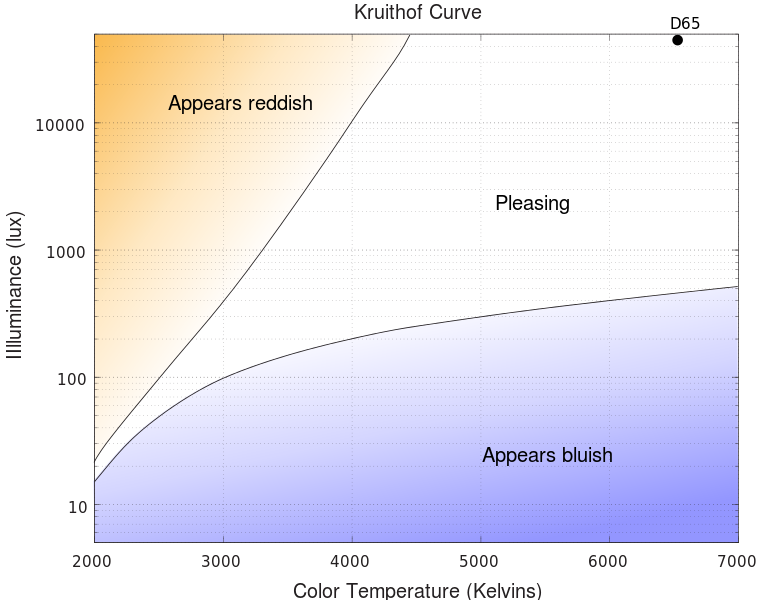In the field of lighting, colour temperature allows us to classify the shades of white light emitted by different light sources. Thanks to this value, whose more exact name is correlated colour temperature, we can group them into three main groups, namely warm, neutral or cool light.
How colour temperature is defined
From a physical point of view, the colour temperature of a light source is the temperature to which we would have to heat a black body (a theoretical object that absorbs all the light and energy incident on it) to make it emit light similar to that of the source.
This temperature, which is measured in kelvins (K), does not necessarily coincide with that of the luminaire. In the case of an incandescent bulb, which illuminates by thermal radiation, the colour temperature of the light it emits is quite similar to the physical temperature of the filament inside it. Conversely, LEDs do not emit light by thermal radiation, hence their very high efficiency, and the value assigned to it has nothing to do with the temperature reached by the LED chips.
| Temperature |
|---|
| 1700K |
| 1850K |
| 2700K |
| 4000K |
| 5000K |
| 5500K |
| 6200K |
| 6500K |
| 9500K |
| Source |
|---|
| Match |
| Candle |
| Incandescent bulb |
| Mercury vapour lamp |
| Fluorescent tube |
| Daylight |
| Xenon lamp |
| Cloudy day |
| LCD TV |
Different light sources where we see the colour of the light they emit and their correlated colour temperature.
Which colour temperature to choose for lighting
LED lighting elements can be found in all three colour temperatures and, as we have already mentioned, the choice of one or the other depends on the personal taste of each individual. In any case, there are more or less generalised trends that are followed in most cases.
Warm Light <3500 K
This colour temperature creates a feeling of comfort and relaxation. It is usually used in living rooms and bedrooms to create a cosy atmosphere. It is the colour of conventional incandescent filament bulbs.
Daylight 3500K-4500K
Daylicght colour temperature offers an intermediate type of illumination and it is the one used in bathrooms, where it is the most recommended as it is much better for tasks such as, for example, applying make-up, although it is perfectly valid for any room. It is considered the most natural and can be used in all types of rooms..
Cool Light >4500 K
Cool light stands out because it improves concentration and allows contrasts to be better distinguished. It is used in kitchens, offices and work spaces in general. In general, these are spaces with a high amount of light (illuminance) which also contributes, as we will see in the Kruithof curves, to pleasant lighting.
In any case, we do not have to limit ourselves to one or the other. For example, in children’s and young people’s bedrooms, where it is common to have a small study space, general lighting, which is normally warm, is usually combined with a cold light source, normally a desk lamp, to illuminate the desk.
Kruithof curves
The choice of one colour temperature or another is in most cases based on the user’s taste in relation to the apparent colour of the light emitted by the luminaire. Apart from the source temperature itself, the illuminance level, which is the number of lux in the space, also influences the perceived colour. Therefore, a certain colour temperature may appear more blue, neutral or reddish depending on the amount of light in the room..
The Dutch physicist Arie Andries Kruithof defined what are known as Kruithof curves where illuminance levels (measured in lux) and colour temperature are established for which the resulting light is considered pleasant and natural.

Basically, colour temperature is a parameter that allows us to classify the tonality of white light, from the most amber to the most bluish, in order to choose the one that best suits the atmosphere we wish to create in the space or the activities that are going to be carried out in it.

